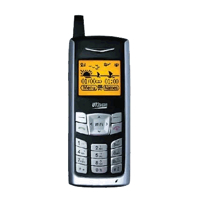Receive new posts as email.
RSS 0.91 | RSS 2.0
RDF | Atom
Podcast only feed (RSS 2.0 format)
Get an RSS reader
Get a Podcast receiver
| Sun | Mon | Tues | Wed | Thurs | Fri | Sat |
|---|---|---|---|---|---|---|
| 1 | 2 | 3 | 4 | 5 | 6 | |
| 7 | 8 | 9 | 10 | 11 | 12 | 13 |
| 14 | 15 | 16 | 17 | 18 | 19 | 20 |
| 21 | 22 | 23 | 24 | 25 | 26 | 27 |
| 28 | 29 | 30 | 31 |
This site operates as an independent editorial operation. Advertising, sponsorships, and other non-editorial materials represent the opinions and messages of their respective origins, and not of the site operator or JiWire, Inc.
Entire site and all contents except otherwise noted © Copyright 2001-2006 by Glenn Fleishman. Some images ©2006 Jupiterimages Corporation. All rights reserved. Please contact us for reprint rights. Linking is, of course, free and encouraged.
Powered by
Movable Type
« November 2005 | Main | January 2006 »
Matthew Gast runs the numbers to find out how many simultaneous calls are practical per access point: VoWLAN depends on having a great availability of access points in dense areas so that callers receive preferably wireline “dial tone” availability, or, at worst, cellular availability. Gast walks through the requirements for major coder/decoder (codec) routines used for VoIP. He provides tables and graphs for the maximum possible number of calls that could theoretically run across a network assuming no contention and all slots filled.
Gast shows the inherent benefit of 802.11a over 802.11g: 802.11a has no older standard to worry about; 802.11g must contend with (pun intended) 802.11b. Even a nominally all G network invokes protection whenever B packets are encountered, thus significantly reducing network throughput. Gast calculates that this protection of G packets in mixed B/G environments drops theoretical call capacity by one-quarter to one-third.
Posted by Glennf at 3:21 PM | Comments (0)
 Vonage is now shipping the UTStarcom F1000 configured for its service: This phone works over Wi-Fi networks that use no encryption or employ WEP or WPA-PSK (WPA-Personal) security. There’s no support for 802.1X authentication. The UTStarcom phone is a generic SIP (Session Initiation Protocol) device for VoIP, but the Vonage-branded version is preconfigured to work through the Vonage network.
Vonage is now shipping the UTStarcom F1000 configured for its service: This phone works over Wi-Fi networks that use no encryption or employ WEP or WPA-PSK (WPA-Personal) security. There’s no support for 802.1X authentication. The UTStarcom phone is a generic SIP (Session Initiation Protocol) device for VoIP, but the Vonage-branded version is preconfigured to work through the Vonage network.
The handset is $130 with a $50 rebate. The company claims 50 to 100 hours of standby time, five hours of talk time, and a two-to-three–hour recharge period. It requires a Vonage subscription, but there’s no additional charge to use the phone.
Posted by Glennf at 10:12 AM | Comments (0)
Aruba will interoperate with SpectraLink, Vocera, Avaya; adds new packet-based VoWLAN spec: Two big announcements on voice from the company that Microsoft picked to replace aging Wi-Fi equipment across their Redmond campuses and worldwide. Aruba says they are certified by SpectraLink, a veteran enterprise VoIP and VoWLAN firm; validated by Vocera, the Wi-Fi badge/intercom maker beloved by nurses and supply-chain logistics managers; and is part of the Avaya developer program.
Simultaneously, they’ve announced Voice Flow Classification (VFC), which is a packet-inspection and prioritization protocol which allows handsets, firewalls, and access points to be coordinated to avoid speech clipping on calls and overloading calls on individual APs. The technology provides prioritization at the firewall level, and monitors off-hook calls throughout a switched WLAN environment to push calls to APs that have capacity. It suppresses handset scanning when that would interfere with a call, too.
There’s an interesting small option noted in this protocol, too, which is that devices that hop on a network to access voice functions can’t pass regular data. This is intended to prevent security holes for enterprises using handsets that don’t have robust authentication.
VFC is part of their 2.5 platform update, which is free to existing users and available this month.
Posted by Glennf at 1:09 PM | Comments (0)
Taiwan’s capital, Taipei, will soon have a ubiquitous Wi-Fi network, and voice will flow somewhat freely over it: Ennyah Technologies will rent a phone for $33 per month that will include unlimited international calls. The phone will handle both GSM and Wi-Fi; a Wi-Fi only phone will start at $16 per month. Both handsets include a Wi-Fi gateway to make sure they can be used wherever the subscribers lives or works, too.
This is one of the many applications that will evolve from ubiquitous Wi-Fi networks, but it will also be challenging to roll these out without annoying early adopters, much like the early days of cellular. When there’s an expectation of seamless access, the service needs to meet or nearly meet the quality of a cellular network: the handoff has to be without a hitch, service can’t abruptly drop while someone’s walking, it needs to work in moving vehicles, and voice quality needs to be generally good to very good.
Interestingly, the international calls will be free, but local calls to wired and wireless numbers will have a metered fee.
Posted by Glennf at 1:06 PM | Comments (0)